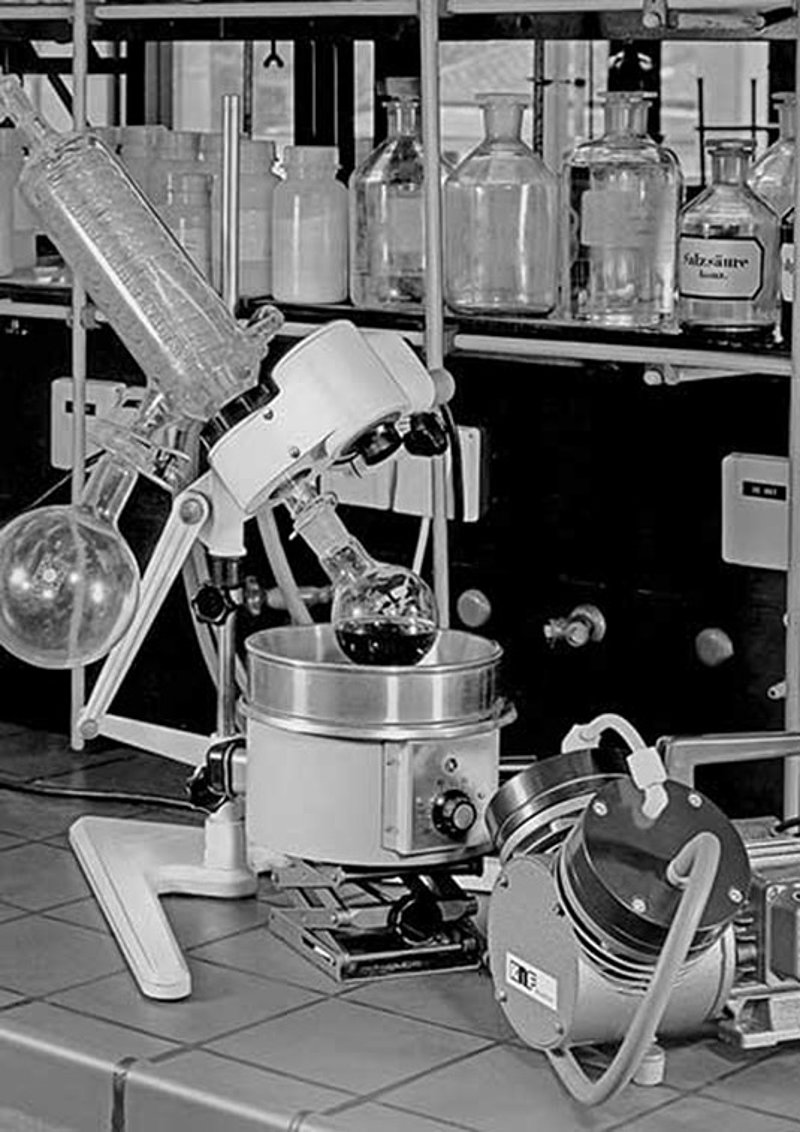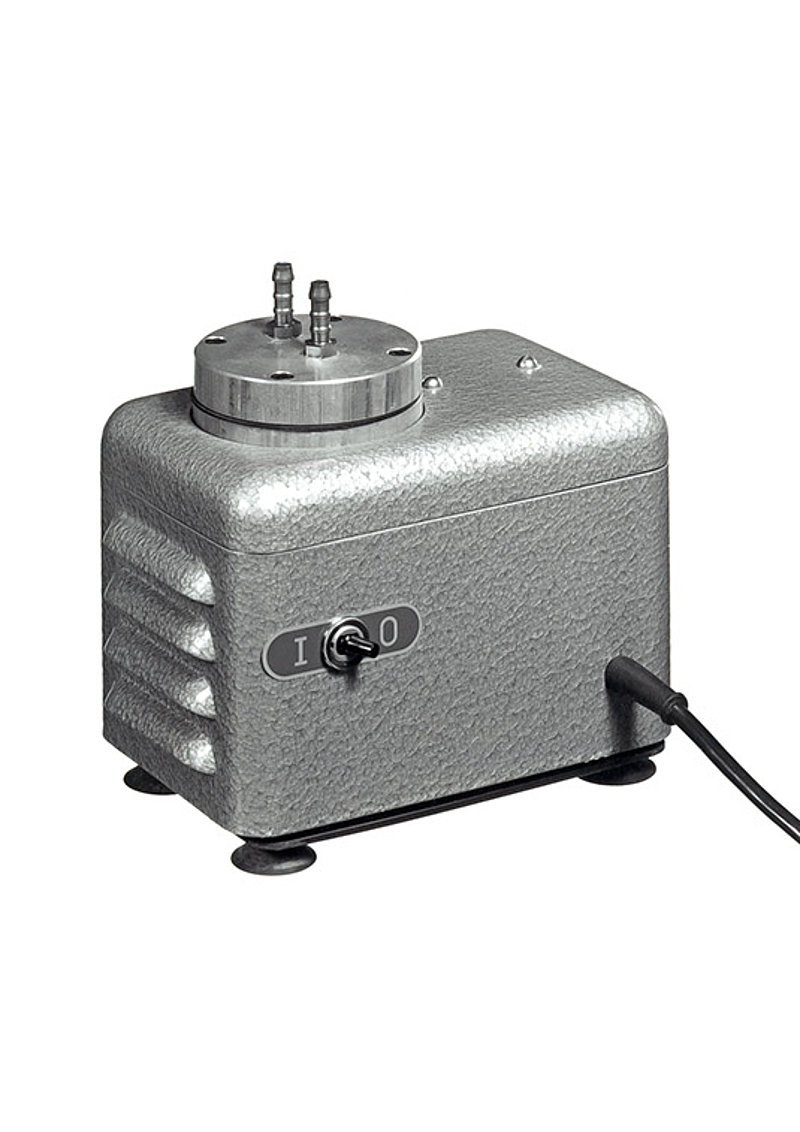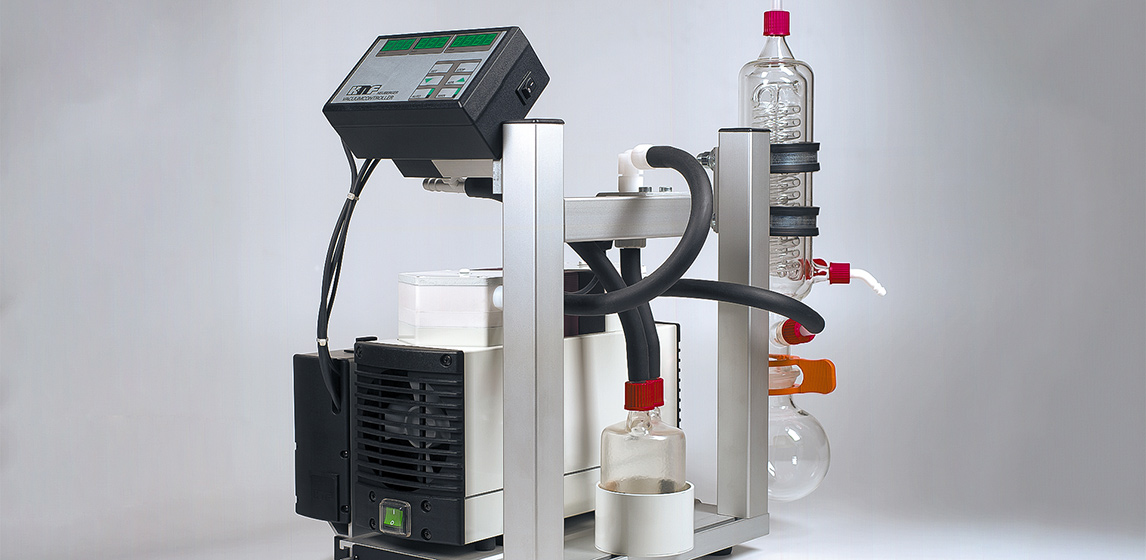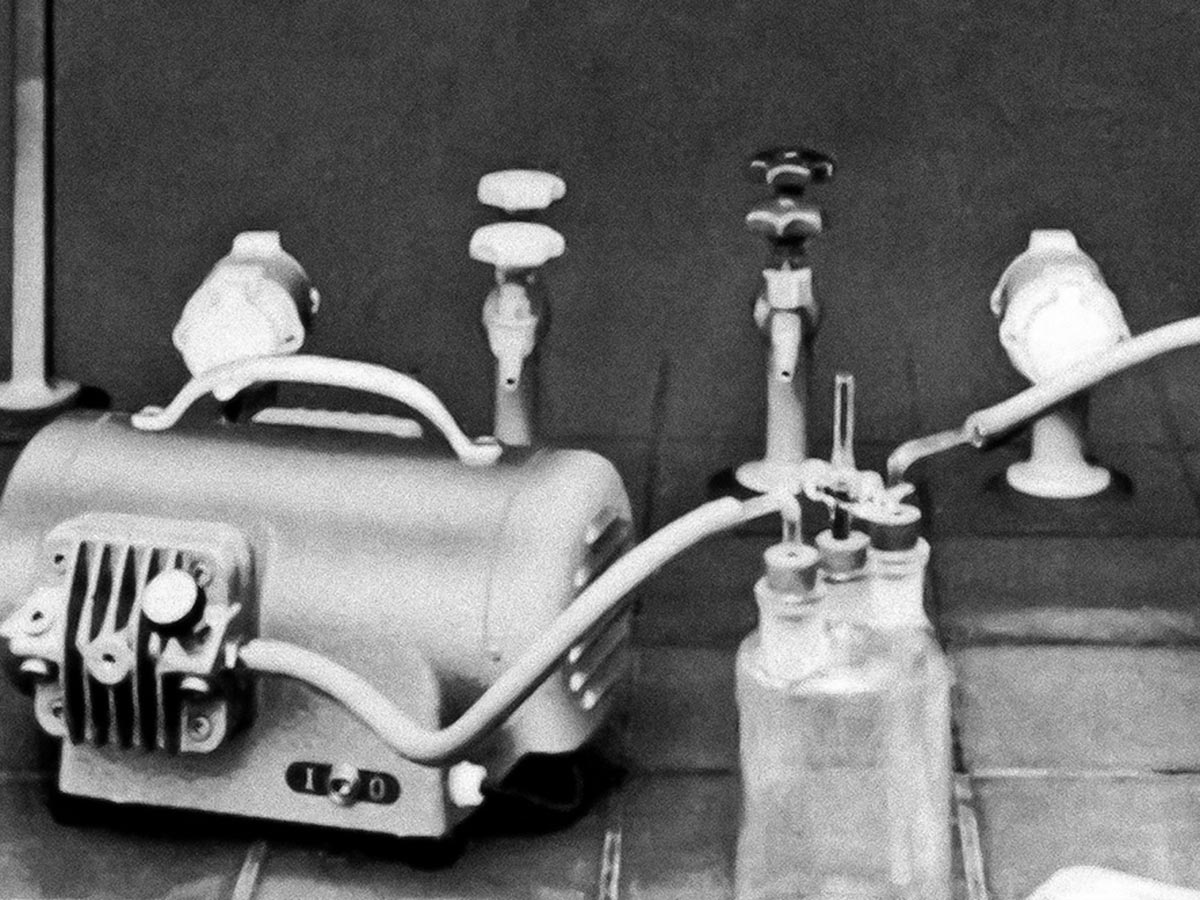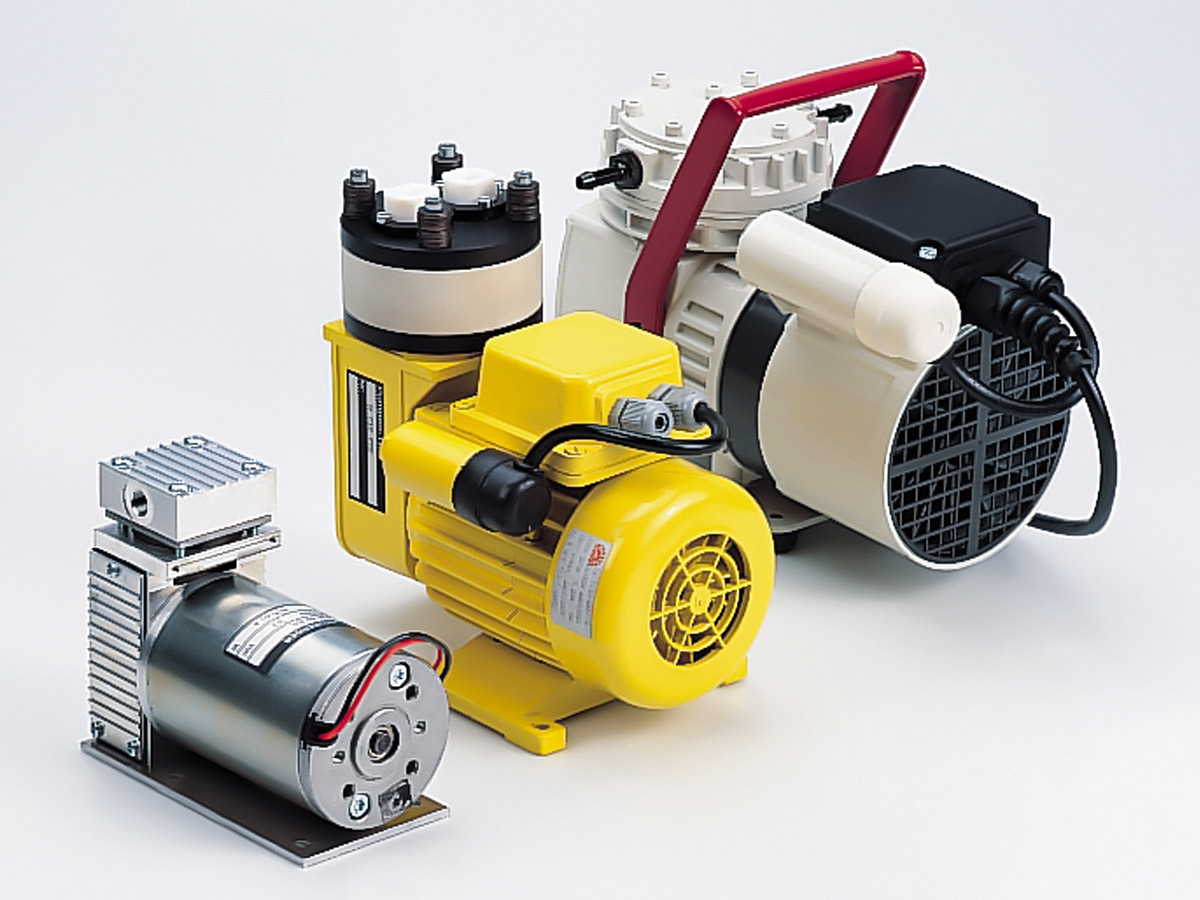Diaphragm Pumps in Laboratories
How KNF becomes part of everyday lab practice

KNF diaphragm pumps are first used in the laboratory sector back in the 1960s. Today vacuum technology remains a common aid in chemical laboratories, used in gentle vacuum drying and filtration processes as well as for concentrating solutions and aspirating aggressive vapors. Laboratories long rely on water jet pumps to create a vacuum. However, Erich Becker recognizes that diaphragm pumps are ideal for this area of application. In contrast to water jet pumps, they save precious drinking water, operate oil-free, can be installed in small spaces and are reliably leak-proof.
KNF begins developing its first product series – the AL 15 and AL 17 AEROMAT pumps – from its then location on Freiburg’s Habsburgerstrasse. Shortly thereafter, the company also acquires its first patent. So, Erich Becker gets back in his car to try and sell his idea to laboratory equipment distributors all across Germany. “I would head off on Sunday evenings to canvass the top dogs in university towns, provide training sessions and talk about our product until I was blue in the face.”
This is Erich Becker’s networking strategy. It is also how he discovers that his pumps would need a higher vacuum to be able to replace water jet pumps. As a result, KNF builds the NK 25 Picco pump, which incorporates two AEROMAT pump heads connected in series for a better vacuum. But before the NK 25 makes a breakthrough in the laboratory sector, the new pump is used for another purpose: refrigeration. It proves ideal for evacuating cooling systems for repair and maintenance.
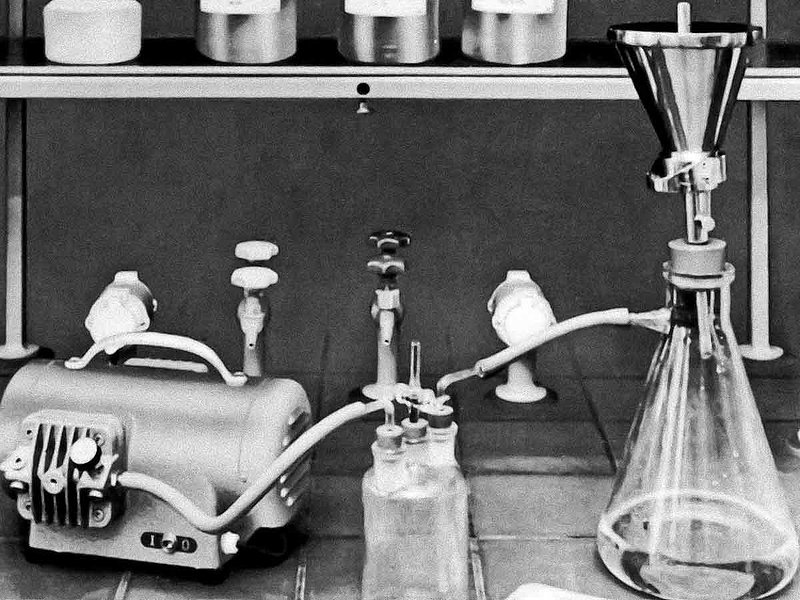
Over time, customers begin to expect more of KNF laboratory pumps. “The next step was to be able to accommodate corrosive media in the laboratory, so we made the pumps acid-proof, initially turning to stainless steel to do so,” Erich Becker explains. Thus, the laboratory pump series continues to grow. In the 1990s, KNF ultimately launches its portable, 100% Teflon pump. Among the current KNF pumps is the LABOPORT N 820 G, which includes a PTFE pump head and a PTFE-coated diaphragm, ensuring the greatest possible chemical resistance. And this is exactly what the pump requires for coming into contact with aggressive media such as solvents.
Since the 1960s, KNF has remained in close contact with laboratories, supporting the work performed there and continually optimizing the design and technical construction of its pumps. KNF has since become a market leader in lab technology – and its diaphragm pumps a part of everyday lab practice.
